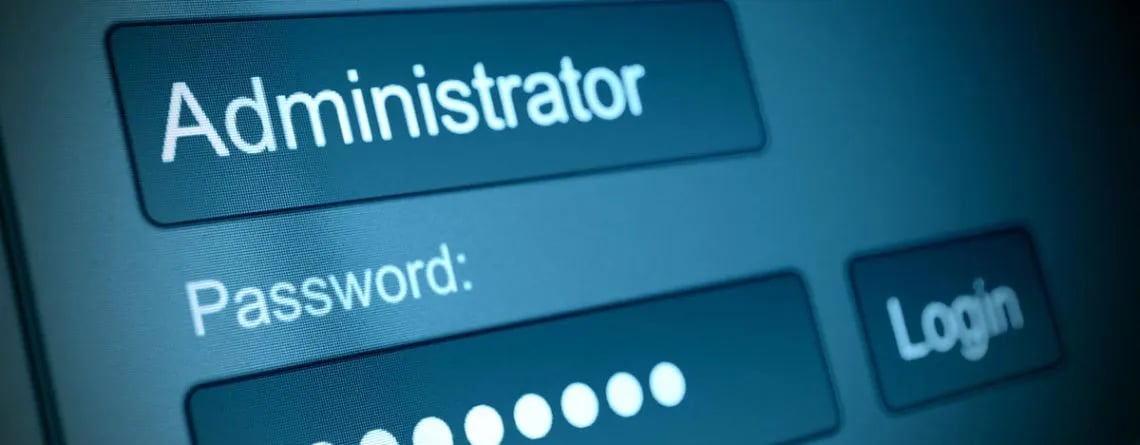What They Don’t Teach in Seminary Series: GRC and Why it Matters for the Church (and Its School)—And Why “Stay in Your Lane” Might Be Holding You Back
I’ve worked across a variety of industries—education, cybersecurity, digital strategy, enterprise tech—and while each space brings its own complexities, ministry is in a category all its own. It’s sacred, deeply relational, and built entirely on trust. But here’s the thing: churches are also complex organizations. And like any organization, they carry risk, handle data, manage people, rely on infrastructure, and face real operational challenges.
That’s why I believe churches—and the private schools many of them operate—need to embrace something often misunderstood or overlooked in ministry circles: GRC—Governance, Risk, and Compliance.
I get it—GRC sounds corporate. But it’s not about red tape or slowing down ministry. In fact, when done right, GRC becomes one of the most powerful tools for protecting your people, stewarding your resources, and keeping your mission aligned. It brings structure without suffocating the Spirit. It’s strategic stewardship.
[Image could not be loaded]
Governance: Guardrails, Not Handcuffs
Governance is about clarity. It answers questions like: How are decisions made? Who has authority? What policies exist to guide and protect our teams?
Too often, churches and their associated schools operate on a mix of tradition, instinct, and goodwill. That might work in the short term—but as things grow more complex, those informal systems start to buckle. Clear governance provides structure so people know where they fit, how to lead, and what the expectations are.
For schools in particular, governance is critical when balancing educational standards, parent communication, student safety, and administrative oversight—often within the same facility as a church. When the church and school share leadership structures, things can get complicated fast without clearly defined roles, responsibilities, and reporting lines.
Governance isn’t about control—it’s about confidence. It frees your teams to focus on what they do best, knowing there’s a system in place that supports rather than hinders their work.
[Image could not be loaded]
Risk: Yes, Your Church and School Have It
Churches aren’t immune to risk—and neither are the schools attached to them. In fact, when you combine the two, your surface area for risk increases significantly.
Let’s talk specifics:
- HVAC and building automation systems: These are often cloud-connected and maintained by third parties. If not secured properly, they can be exploited as entry points into your broader network.
- Worship and production teams setting up their own Wi-Fi routers: This might seem harmless in the moment—just trying to get the lights synced or the soundboard working—but unmanaged devices on your network are a massive security hole.
- Pushback on Multi-Factor Authentication (MFA): Let’s be honest—no one likes MFA. But the bigger picture is that MFA is one of the simplest and most effective ways to stop account takeovers. Avoiding it because it’s inconvenient is like leaving your front door unlocked because you don’t like keys.
And here’s the deeper issue: we’ve prioritized convenience over what’s best for the organization. People want to use technology like they do at home—install what they want, log in however they prefer, and avoid friction. But churches and schools aren’t personal tech labs. They’re institutions that carry legal, financial, and reputational weight.
If we truly care about the organization—about the ministry—it’s not just about aesthetics, guest experience, or having the latest gear. It’s about trust. Because when a cyberattack hits, it’s not just data that’s lost—it’s confidence. Donors walk away. Parents question their children’s safety. Members lose faith in leadership.
And that’s why this isn’t just an IT issue. It’s a leadership issue.
Security must be led from the front. When leadership models responsible behavior—embracing security protocols, supporting governance policies, and encouraging teams to do the same—it sends a clear message: “We care about this.” And when you, as a leader, keep the bigger picture in mind, your teams will follow you.
Yes, security might slow you down for a moment. But a breach will stop you cold.
[Image could not be loaded]
Compliance: Because Integrity Isn’t Optional
Churches and faith-based schools must navigate a wide range of compliance requirements—from tax codes and employment laws to FERPA, ADA, copyright licensing, and state educational regulations.
This is especially critical in schools, where failure to comply with privacy, accessibility, or mandatory reporting laws could result in legal action, funding loss, or even closure.
Churches sometimes think they’re shielded from regulation because they’re nonprofit—but that’s not true. And schools have even more exposure, especially when dealing with minors, student records, and parental rights.
Compliance isn’t about checking boxes. It’s about earning trust and modeling integrity. It protects your leadership, your staff, your students, your congregation—and the witness of your organization.
[Image could not be loaded]
The Myth of “Staying in Your Lane”
Let’s be honest—ministry culture can sometimes fall into the trap of “stay in your lane.” IT handles tech. Facilities handle buildings. The school handles students. The worship team handles sound. Leadership handles vision.
The problem? That’s not how real-life ministry works anymore.
There are no lanes anymore. IT touches HVAC systems, security cameras, point-of-sale systems, school management tools, livestreaming, lighting, worship production, and websites. When teams don’t talk to each other—when they operate in silos—things fall apart.
Imagine the school installs new Chromebooks that crash the Wi-Fi during Sunday services. Or the church adds security cameras that violate the school’s student privacy policies. Or two teams purchase overlapping software subscriptions with no coordination.
This isn’t hypothetical. It happens all the time.
GRC helps prevent that. It’s a framework that brings everyone—IT, Facilities, Finance, Worship, Education—to the same table. It fosters shared responsibility, clarity, and coordination. When people stop thinking in lanes and start thinking in teams, you build systems that actually support your mission instead of accidentally sabotaging it.
[Image could not be loaded]
GRC as a Ministry Multiplier
Let’s reframe the way we think about GRC. It’s not bureaucracy—it’s bandwidth. When governance is clear, risk is managed, and compliance is covered, your team isn’t stuck guessing or cleaning up messes. They’re free to move with confidence and unity.
GRC helps both churches and their schools avoid reaction mode. It shifts the culture from “Why didn’t anyone catch that?” to “We’ve already thought this through.”
It’s not about slowing down ministry. It’s about building ministry that lasts.

Final Thoughts: Lead It from the Front
The Church has the greatest mission on earth—and for many churches, that mission includes shaping young minds through private education. That’s an enormous responsibility. And if we’re going to lead well, we need to do more than preach well—we need to protect well.
GRC is how we steward the mission behind the scenes. It ensures that systems support the calling. That infrastructure doesn’t undermine outreach. That our testimony is just as strong on a spreadsheet or server as it is in a sermon.
If you’re in leadership, hear this clearly: this starts with you. When you care about security, your team will too. When you take governance seriously, others will follow. When you lead with integrity, you create a culture that reflects it at every level.
Let’s not wait for a crisis to realize what we could’ve done differently.
Let’s lead now—wisely, courageously, and with the long view in mind.
Bibliography
- National Institute of Standards and Technology (NIST). (2018). Framework for Improving Critical Infrastructure Cybersecurity, Version 1.1. U.S. Department of Commerce. https://www.nist.gov/cyberframework
- Center for Internet Security (CIS). (2024). CIS Controls v8: Critical Security Controls for Effective Cyber Defense. https://www.cisecurity.org/controls
- ISACA. (2023). COBIT 2019 Framework: Governance and Management Objectives. https://www.isaca.org/resources/cobit
- Church Law & Tax. (2023). Risk Management for Churches: Protecting Your Ministry from Legal & Financial Challenges. Christianity Today. https://www.churchlawandtax.com
- U.S. Department of Education. (2023). FERPA Guidelines for Schools and Educational Institutions. https://studentprivacy.ed.gov/
- Microsoft. (2023). Zero Trust Security: A Modern Approach to Cybersecurity. https://www.microsoft.com/security/blog
- Harvard Business Review. (2020). “Why Boards Aren’t Dealing with Cyber Threats.” https://hbr.org/2020/05/why-boards-arent-dealing-with-cyber-threats
- Barna Group. (2022). State of the Church: Technology and Ministry Trends. https://www.barna.com
- International Organization for Standardization (ISO). (2022). ISO/IEC 27001: Information Security Management. https://www.iso.org/isoiec-27001-information-security.html
- National Cybersecurity Alliance. (2023). Cybersecurity for Nonprofits and Faith-Based Organizations. https://staysafeonline.org













